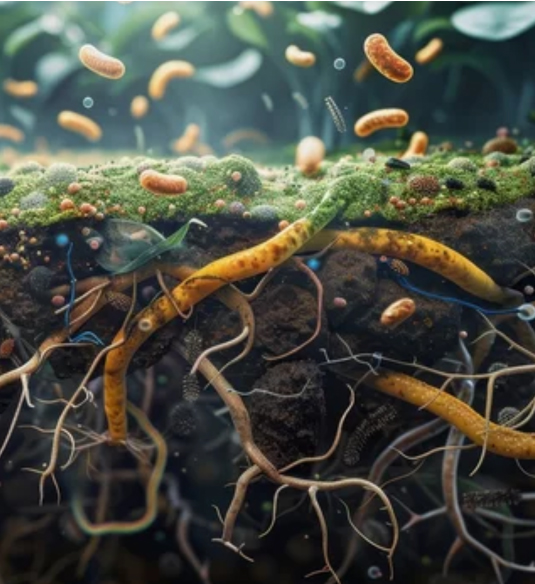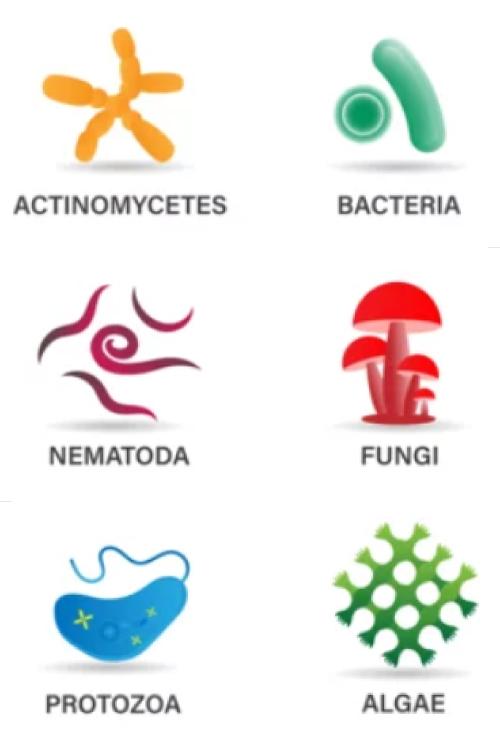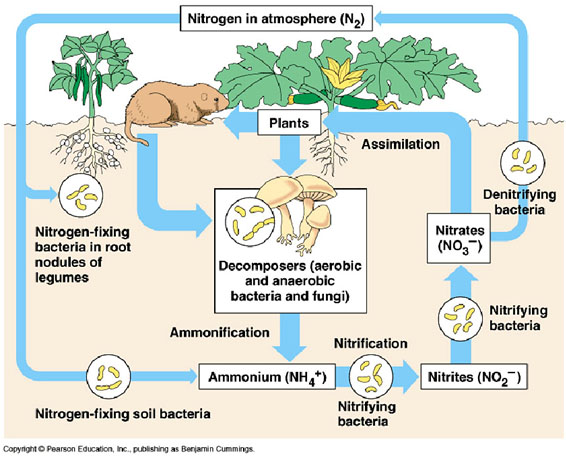Microorganisms
Microorganisms abound in the soil and are critical to decomposing organic residues and recycling soil nutrients. Bacteria are the smallest and most hardy microbe in the soil and can survive under harsh conditions like tillage. Bacteria are only 20–30% efficient at recycling carbon, have a high nitrogen content (3 to 10 carbon atoms to 1 nitrogen atom or 10 to 30% nitrogen), a lower carbon content, and a short life span. Carbon use efficiency is 40–55% for mycorrhizal fungi so they store and recycle more carbon (10:1 carbon to nitrogen ratio) and less nitrogen (10%) in their cells than bacteria. Fungi are more specialised but need a constant food source and grow better under no-till conditions.
Soil organic matter (SOM) is composed of the “living” (microorganisms), the “dead” (fresh residues), and the “very dead” (humus) fractions. Active SOM is composed of the fresh plant or animal material which is food for microbes and is composed of easily digested sugars and proteins. The passive SOM is resistant to decomposition by microbes (higher in lignin). Active SOM improves soil structure and holds plant available nutrients. Every 1% SOM contains 1,000 pounds of nitrogen, 100 pounds of phosphorus, 100 pounds of potassium, and 100 pounds of sulphur along with other essential plant nutrients. Tillage destroys SOM by oxidising the SOM, allowing bacteria and other microbes to quickly decompose organic residues. Higher temperatures and moisture increase the destruction of SOM by increasing microbial populations in the soil. Organic residues with a low carbon to nitrogen (C:N) ratio (less than 20) are easily decomposed and nutrients are quickly released (4 to 8 weeks), while organic residue with a high C:N ratio (greater than 20) decompose slowly and the microbes will tie up soil nitrogen to decompose the residues. Protozoa and nematodes consume other microbes in the soil and release the nitrogen as ammonia, which becomes available to other microorganisms or is absorbed by plant roots.




